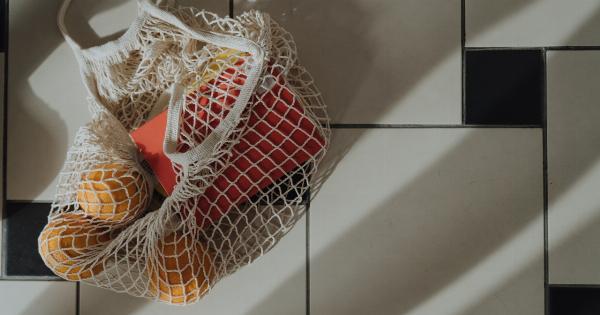Your hair is an important aspect of your overall appearance, and it deserves proper care and attention.
However, many people unknowingly subject their hair to damage through various factors such as excessive heat styling, chemical treatments, poor nutrition, and neglect. If you want to maintain healthy and beautiful locks, it’s crucial to be aware of the potential dangers and take necessary precautions. In this article, we will discuss some common hair problems and provide tips on how to prevent them.
Don’t let this happen to your hair – read on to learn more!.
1. Heat Damage
Using hot tools like straighteners, curling irons, and blow dryers can cause significant damage to your hair over time. The excessive heat strips away moisture, leaving your hair dry, brittle, and prone to breakage.
To prevent heat damage, consider the following tips:.
- Apply a heat protectant spray before using any hot styling tool.
- Lower the heat setting on your tools whenever possible.
- Avoid using hot tools on wet hair to prevent further damage.
- Gently towel-dry your hair before blow-drying to minimize heat exposure.
2. Chemical Treatments Gone Wrong
Chemical treatments such as bleaching, perming, or coloring can transform your hair, but they can also cause severe damage if not done correctly. Over-processing your hair or using harsh chemicals can lead to dryness, breakage, and even hair loss.
Here are some tips to ensure a safer chemical treatment experience:.
- Consult a professional hair stylist who is experienced in performing chemical treatments.
- Do a patch test before applying any chemical product to your entire head to check for allergic reactions.
- Follow the instructions provided by the manufacturer or stylist and never leave the product on for longer than recommended.
- Give your hair enough time to recover between different chemical treatments.
3. Poor Nutrition
Believe it or not, your hair’s health is closely linked to your diet. If you don’t provide your body with the necessary nutrients, your hair will suffer. A lack of vitamins, minerals, and proteins can result in brittle, dull, and weak hair.
To promote healthy hair growth, make sure to:.
- Incorporate a variety of fruits, vegetables, and whole grains into your diet.
- Consume enough lean proteins like poultry, fish, and tofu.
- Include foods rich in omega-3 fatty acids, such as walnuts and salmon.
- Take a multivitamin or hair supplement if you have specific deficiencies.
4. Excessive Brushing and Styling
Brushing and styling your hair can be damaging if done improperly. Vigorous brushing or using harsh hair accessories can lead to breakage and split ends. Avoid these issues by:.
- Using a wide-toothed comb or a brush with flexible bristles to detangle your hair gently.
- Starting from the ends and gradually working your way up to prevent unnecessary tension.
- Avoiding hairstyles that pull too tightly on your hair, like tight ponytails or braids.
- Choosing hair accessories made from soft materials, such as fabric-covered elastics.
5. Ignoring Scalp Health
A healthy scalp is the foundation for strong and beautiful hair. Neglecting your scalp can lead to issues like dandruff, itchiness, and even hair loss. To maintain a healthy scalp:.
- Wash your hair regularly to remove dirt, oil, and product buildup.
- Massage your scalp gently while shampooing to stimulate blood circulation.
- Avoid using excessively hot water as it can strip away natural oils.
- Treat any scalp conditions promptly with appropriate shampoos or treatments.
6. Overwashing or Underwashing
Finding the right balance when it comes to washing your hair is essential. Overwashing can strip away the natural oils and cause dryness, while underwashing can lead to a buildup of dirt and oil.
Consider these tips to find the ideal washing routine for your hair:.
- Observe how frequently your scalp and hair feel oily or dirty – this can help determine how often you need to wash your hair.
- Use a gentle shampoo and conditioner suitable for your hair type.
- Consider dry shampoo as an option in between washes to refresh your hair without excessive washing.
7. Tight Hairstyles and Hair Accessories
Pulling your hair tightly into hairstyles like buns, ponytails, or braids can cause damage, especially if done regularly. The constant tension on your hair follicles can lead to hair breakage and a condition called traction alopecia. To prevent this:.
- Opt for looser hairstyles that do not strain the hairline or roots.
- Avoid using rubber bands or metal accessories that can snag or pull on the hair.
- Take breaks from tight hairstyles to allow your hair to relax and recover.
8. Environmental Factors
Environmental factors such as sun exposure, pollution, and extreme weather conditions can wreak havoc on your hair. Protect your hair from these elements by:.
- Wearing a hat or scarf to shield your hair from the sun’s harmful UV rays.
- Rinsing your hair with clean water after swimming in chlorinated pools or salty seawater.
- Using a clarifying shampoo regularly to remove product buildup caused by pollution.
- Moisturizing your hair with deep conditioning treatments to counteract the effects of harsh weather.
9. Skipping Regular Trims
Neglecting regular trims can lead to split ends, which can travel up the hair shaft and cause further damage. While it may seem counterintuitive, getting regular trims can actually promote hair growth and overall hair health. Make sure to:.
- Visit a professional hairstylist every 6-8 weeks for a trim.
- Communicate with your stylist about the amount you want to be trimmed – it doesn’t have to be a major cut.
- Invest in quality hair shears to prevent additional damage during trims.
10. Stress and Hair
Stress can have a significant impact on your hair’s health. It can lead to conditions such as hair loss, thinning, or a dry and itchy scalp.
While it’s impossible to eliminate stress entirely from your life, you can take steps to manage it more effectively:.
- Practice relaxation techniques like meditation, deep breathing, or yoga.
- Engage in physical activities that help reduce stress levels.
- Ensure you’re getting enough sleep to allow your body and mind to rest and recover.
- Consider therapy or counseling if stress becomes overwhelming.
Taking care of your hair requires effort and dedication. By being mindful of these potential dangers and implementing preventive measures, you can ensure that your hair remains healthy, vibrant, and beautiful.
Don’t let this happen to your hair – take action today to protect and nurture your precious locks!.





























